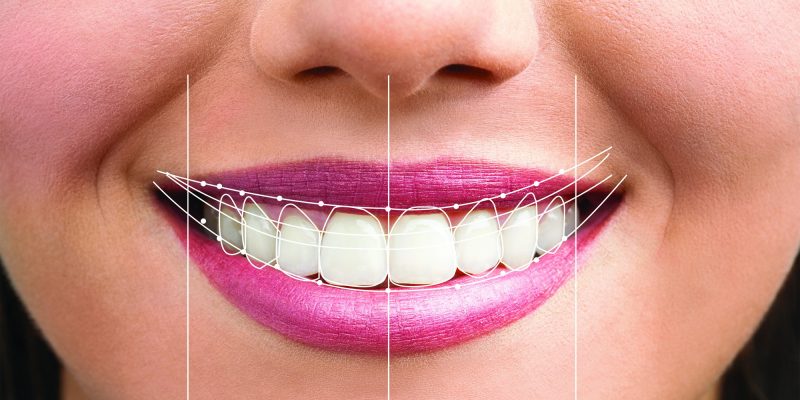– Dr Sanah Sayad
Confidence is the most beautiful thing that one can possess, however we often find ourselves severely lacking on that front. Most of my patients walk into the practice not feeling happy with the way their smile looks. They are not sure what bothers them or don’t really know how to react when I ask them what is the best thing and the worst thing about your smile.
It is only after they see themselves smile in a photograph or a video that they realize what they would like to change about their smile.
According to a study conducted in 2015, at the most basic level, even though we spend a lifetime looking at ourselves in mirrors, we don't actually have a clear understanding of what we look like.
Beauty is relative so trying to fix a smile without having the patient on board is like guessing their favourite color. It can horribly go wrong, especially if there is no documentation or reference for comparison.
Smile Window – The Frame of Smile Designing
While designing smiles the most important thing that gives us a reference of what , where and how the teeth must move is the smile window. If the lips are the glamorous curtains, the smile within them should be framed and designed on basis of various macro and micro, dental and facial components.



Midline Vs Canting
While the facial midline plays an important role in determining the position of the maxillary central incisors, a discrepancy of 2 to 3 mm is hardly appreciated and for a young patient the mandibular central incisors and lower midline is never really seen. What we as clinicians must concentrate on is the maxillary cant, as a canted midline since that is caught by the eye instantly making the smile look unpleasant and often distressed. Most patients have a tendency to tilt their heads while smiling since we all know our best angles, however that makes documentation difficult and in many cases a wrong reference while designing teeth especially with altered lengths and proclinations (Incisal Display and Position)
There are four non retracted pictures at our practice that we do for every case along with a video that helps us understand lip position, phonetics and incisal display. This also gives us a good idea about the smile window that can be easily communicated to the patient & laboratory to decide shade, shape and number to teeth that we would treat. Lip positions and smile lines can really surprise us sometimes while comparing between a static picture and dynamic video . I have seen some low smile lines in a picture go to a high smile line in a video, especially if the patient is not too comfortable with cameras.



Designing smiles digitally
Since a couple of years , we have been designing smiles digitally due to excellent lab support & printing our models in house, saving significant chairside time without the need for facebow and articulators due to strict photography protocols that allows us to digitally align the teeth to the face and jaws in retracted and non retracted views.
This makes the patient excited, motivated and gives every one involved a clear understanding of what the end result wouldd look like. Finances, treatment plans and changing minor details like shape , shade and texture starts from here on.



Motivational Mock-up
If the patient likes what they see digitally, we design the same shapes as a motivational mock up and press it intra orally to see how the restorations blend in as a part of the various macro and micro facial components. This step involves no preparation or subtraction on the teeth and is infact additive . If a subtractive mock up is desired the patient must be informed about the changes in proclination verbally (either orthodontically or by facial reduction) whatever the treatment plan involves.



Functional Mock-up
If the patient is now willing to undergo treatment after a detailed conversation about time duration, finances and treatment plan with prognosis, we go ahead with the functional designs. For veneers this would mean using the Galip Gurel Technique : APT or using these designs after Deprogramming for an altered VDO for a Full mouth Rehabilitation. Here we draw a thin line between what looks good and what is functional in the mouth . There are some minor changes expected from the motivational step depending on how many teeth are involved. This step allows us to visualize the occlusion in harmony with aesthetics and any unstable contacts. Prematurities or parafunction can be dealt with easily. I truly believe that a well informed patient is a happy and co operative patient and designing smiles with them makes the process exciting and a personalised one.
Final Restorations
This is the easiest step if all the earlier protocols are followed diligently . The above mentioned steps prepare the patient, clinician and laboratory to not leave anything to chance and everyone is on the same page with respect to esthetics and functionality with a clear understanding of where the case is headed. We discuss shades, polychromia and materials at length just before this step to make sure every smile is personalised , beautiful and a reflection of the patient’s personality!


To Conclude
As they say ‘Beauty is Relative’ , asking the patient to see through a clinician’s eyes is a recipe for disaster because no two individuals are alike and we are what life experiences make of us!!




















Comments